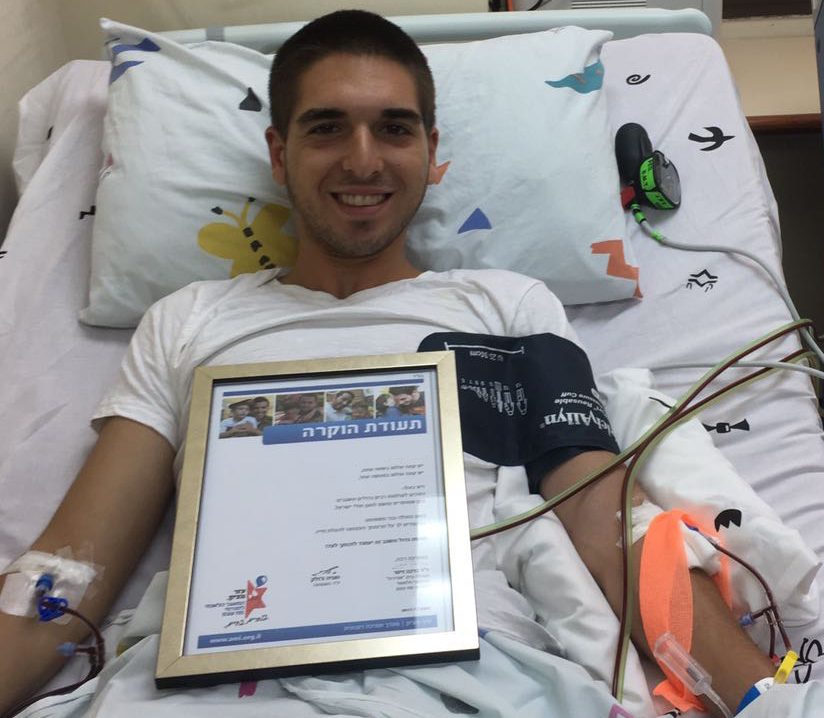Enlarging the Bone Marrow Registry
Ezer Mizion holds bone marrow drives – in Israel – regularly to register new potential stem cell donors. Each new registrant provides a cheek swab sample, which is used to compare specific genetic markers, known as human leukocyte antigens (HLA) with HLA markers of patients who need a bone marrow transplant. The results are then recorded in the Ezer Mizion registry which is committed to keep the donors and patients information confidential in order to protect their rights and privacy.

What disqualifies you from being a bone marrow donor?
Since the age of the donor producing the stem cells is a major factor in success of the transplant, only registrants between the ages of 18-45 are accepted. In addition, the health of the potential donor is important in ensuring a successful outcome. The new registrant will be expected to fill out a detailed health questionnaire out at the time of registration.
When Is A Transplant Needed?
A healthy blood system is always making new blood-forming cells which are necessary for survival. If the body begins making diseased cells or not enough healthy cells, a bone marrow transplant may be the only potential cure for some patients. During transplant, the donor’s healthy blood-forming cells are transfused into the patient’s bloodstream and settle in the bone marrow, where they begin manufacturing new blood-forming cells.
Matching Donor to Recipient
Medical centers worldwide turn to Ezer Mizion’s registry in search of compatible stem cell donors for their patients. When a possible match is found, the potential donor will be contacted to confirm that he or she is willing to donate. If the donor consents he or she will undergo further blood tests and physical exam in order to ensure that the donation is safe both for the donor and the patient. Once the donor confirmed as medically eligible and agreed to proceed, the patient will be notified and will start pre-transplant treatments to prepare his or her body for the transplant.
How Does the Transplant Take Place?
There are two kinds of stem cells donation methods. Depending on the treatment selected for the patient, the stem cells donor will be asked to donate either peripheral blood stems cells (PBSC) or bone marrow (BM) stem cells:
PBSC is a non-surgical procedure and the common donation method used nowadays. For 4-5 days leading up to donation, the donor will be given under-the-skin injections of G-CSF (granulocyte colony stimulated factor). These injections increase the number of blood-forming cells in the donor’s bloodstream. On the day of donation, blood is removed through a needle on one arm and passed through an automated machine that separates out the blood-forming cells. The remaining blood is returned to the donor’s body through the other arm. Bone and muscle aches are the most common side effects of G-CSF, however not all donors experience them. Some donors may experience nausea or tingling feeling during the collection procedure as well as fatigue, headaches or discomfort at the injection site. Side effects are usually mild to moderate and short in duration. While recovery times vary depending on the individual, most PBSC donors report a full recovery within few days of donation.
Bone marrow donation is a short surgical procedure performed under anesthesia in which hollow needles withdraw stem cells from the bone marrow at the back of the pelvic bones. Common side effects reported after marrow donation are lower back or discomfort, fatigue, throat pain, muscle pain and insomnia. Most donors recover well and are back to their normal routine within several days.
Meeting “His” Patient
According to Ezer Mizion policy, donors and patients may have anonymous contact during the first year after transplant, depending on confidentiality policies of the transplant center. After a minimum of one year, direct contact can be made only if both consent to have their personal contact information shared.
